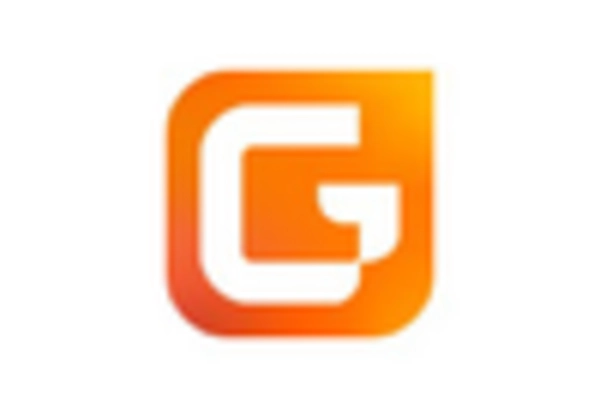Rising Incidence of Sepsis
The increasing incidence of sepsis is a primary driver for the Sepsis Therapeutic Market. According to recent estimates, sepsis affects millions of individuals annually, leading to significant morbidity and mortality. This rise is attributed to factors such as an aging population and the prevalence of chronic diseases, which heighten the risk of infections. As healthcare systems grapple with this challenge, the demand for effective therapeutic solutions intensifies. The Sepsis Therapeutic Market is thus witnessing a surge in research and development activities aimed at innovative treatment options. Pharmaceutical companies are investing heavily in clinical trials to address this urgent need, potentially leading to a broader array of therapeutic agents in the market. This trend suggests a robust growth trajectory for the industry as stakeholders seek to mitigate the impact of sepsis on public health.
Advancements in Diagnostic Technologies
Advancements in diagnostic technologies are significantly influencing the Sepsis Therapeutic Market. Rapid and accurate diagnostic tools are essential for timely intervention in sepsis cases. The development of biomarkers and point-of-care testing has improved the ability to identify sepsis early, which is crucial for effective treatment. As these technologies become more widely adopted, they are likely to enhance patient outcomes and reduce healthcare costs associated with prolonged hospital stays. The integration of artificial intelligence and machine learning in diagnostics further augments this trend, enabling healthcare providers to make informed decisions swiftly. Consequently, the Sepsis Therapeutic Market is expected to expand as the demand for therapies that align with these advanced diagnostic capabilities grows, fostering a more proactive approach to sepsis management.
Growing Awareness and Education Initiatives
Growing awareness and education initiatives regarding sepsis are crucial drivers for the Sepsis Therapeutic Market. Healthcare professionals and the general public are increasingly educated about the signs and symptoms of sepsis, leading to earlier recognition and treatment. Campaigns aimed at raising awareness have been instrumental in changing perceptions about sepsis, emphasizing its severity and the need for prompt medical attention. This heightened awareness is likely to result in increased patient presentations to healthcare facilities, thereby driving demand for effective therapeutic options. As more individuals understand the risks associated with sepsis, the Sepsis Therapeutic Market is expected to benefit from a surge in treatment-seeking behavior, ultimately contributing to improved patient outcomes and reduced mortality rates.
Regulatory Support for Innovative Therapies
Regulatory support for innovative therapies is a pivotal factor influencing the Sepsis Therapeutic Market. Regulatory agencies are increasingly recognizing the need for expedited approval processes for sepsis treatments, given the urgent nature of the condition. Initiatives aimed at facilitating the development and approval of novel therapeutics are likely to encourage pharmaceutical companies to invest in sepsis-related research. This supportive regulatory environment can lead to faster market entry for new therapies, which is essential for addressing the pressing needs of patients suffering from sepsis. As a result, the Sepsis Therapeutic Market may experience accelerated growth, with a diverse range of treatment options becoming available to healthcare providers and patients alike.
Increased Investment in Research and Development
Increased investment in research and development is propelling the Sepsis Therapeutic Market forward. Pharmaceutical companies and research institutions are allocating substantial resources to discover novel therapeutic agents and treatment protocols. This focus on innovation is driven by the urgent need to address the complexities of sepsis, which often presents with varied symptoms and requires tailored treatment approaches. Recent data indicates that the global market for sepsis therapeutics is projected to reach several billion dollars by the end of the decade, reflecting the potential for lucrative returns on investment. Furthermore, collaborations between academia and industry are fostering a conducive environment for breakthroughs in sepsis treatment. As a result, the Sepsis Therapeutic Market is likely to witness a proliferation of new therapies that could significantly alter the treatment landscape.

















Leave a Comment